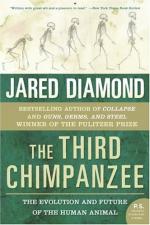
|
| Name: _________________________ | Period: ___________________ |
This quiz consists of 5 multiple choice and 5 short answer questions through Chapter 9, Animal Origins of Art.
Multiple Choice Questions
1. The author presents a greatly simplified view of the evolutionary process where numerous uncertain elements are noted but dismissed. For what does this allow?
(a) Other scientists to dismiss this author's claims.
(b) A fairly straightforward presentation of human evolution in an intelligible and accessible format.
(c) The author to convince the reader to trust his views.
(d) To make evolution seem simple and straightforward.
2. How do scientists know that about four millions of years ago the first proto-human hominids began to walk upright?
(a) Footprints have been left by these proto-human hominids.
(b) The food eaten by the proto-human hominids is different than previous species.
(c) From analyzing skeletal limb changes discovered in the fossil record.
(d) The skeletons of chimpanzees have been found from the same time period.
3. To what is the pair bonding found among humans probably due?
(a) The need for having many children.
(b) The need for a permanent mate.
(c) The inordinately high burden of childcare found within human societies.
(d) The difficulty of surviving on one's own.
4. Why must women be highly selective in extra-marital sexual partners?
(a) They risk contracting diseases.
(b) To avoid becoming emotionally attached.
(c) They are supported by society.
(d) To avoid compromise or disclosure.
5. How selective are humans across an array of traits?
(a) Slightly.
(b) Highly.
(c) Not at all.
(d) Minimally.
Short Answer Questions
1. This view on sexual strategies is completely consistent with what?
2. What does research show about those who are of one race and are raised by members of another race?
3. Somewhat less than 100,000 years ago, who replaced the Neanderthals?
4. What does one of the most instructive avenues of investigation in human sexual attraction involve?
5. Whenever two groups with disparate developed languages come into occasional contact that, for social reasons, precludes the use of one or the other languages, what arises?
|
This section contains 434 words (approx. 2 pages at 300 words per page) |

|




